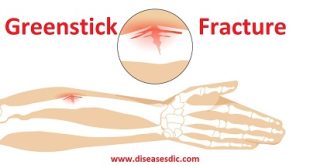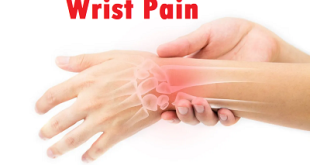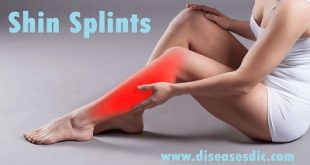Definition
Paget’s disease is also known as osteitis deformans and Paget disease. It is a localized disorder occurs during bone remodeling. In this disease, the normal cycle of bone renewal is disrupted due to the abnormal activity of osteoclast cells. Due to which the extreme resorption of bone by osteoclast cells takes place in the remodeling phase.
As a result, the reconstructed bone has a peculiar structure which is disorganized, soft, more bulky, mechanically weak, more vascularized, brittle and breaks easily. This complication is susceptible to arthritis, hearing loss, discomfort, and fractures. If a fracture happens to a patient with Paget’s disease, it may take a long time to alleviate the fracture, because of the irregularities in the bone renewal functions.
Types of Paget’s disease
There are two types in Paget’s disease which are as follows:
- Monostatic type: When Paget’s disease affects the single site of bone called Monostatic.
- Polyostotic type: When multiple sites of bone are affected by this disease is known as polyostotic.
Discovery of Paget’s disease
In 1877, Paget’s disease was discovered by an English surgeon Sir James Paget and so this disease is named after him.
Epidemiology
It is hard to evaluate the frequency of PDB in light of the fact that most patients are asymptomatic. The worldwide predominance changes from 1.5% to 8.3% contingent upon elements, for example, age, a nation of habitation, and sex. Occurrence increments after age 50 years. The commonness is higher in the Unified Kingdom, France, Germany, Australia, New Zealand, and North America. It is uncommon in Asia, India, and Scandinavia. PDB is somewhat more pervasive in men than in ladies.
What causes Paget’s disease?
The causes of Paget’s disease are not fully known. But there are some predicted reasons behind this disease are as follows:
- Infection of measles virus during childhood. A virus particle called paramyxovirus nucleocapsid was identified inside the bone cells in a few patients, whereas the virus is not found in the normal patient. But this statement is controversial.
- Partially due to genetic inheritance. If your parents or other family members have Paget’s disease more likely to get affected by this problem.
- Genes responsible for this disease is Sequestosome 1 gene on chromosome 5.
Risk factors
Factors which increase the risk of getting the Paget’s disease are as follows
- Being older age: People older than 45 are most prone to develop Paget’s disease.
- Family history: Paget’s disease may also due to family history.
- Sex: Gender is also a major one. Mostly men are likely to be affected than women.
- National origin: Paget’s disease of bone is more prevalent in England, central Europe, Scotland, and Greece — as well as countries settled by European immigrants.
Symptoms
Usually, people with Paget’s disease do not have symptoms until it is known by X-ray images or blood tests. Symptoms do rarely occur as follows.
- Frequent joint pain, hip pain, low back pain and neck pain
- Damage to cartilage of joints
- Enlarged bones
- Broken bones
- Fatigue
- Hearing problems due the pressure exerted by the enlarged bones to the surrounding nerves in the ear
- Numbness or tingling due to pressure on nerve
- Enlarged head, and hips
- Curved backbones
- Bowed legs
- Reduced in height
Other symptoms appear depending upon the location it occurs in the body are as follows:
Skull
- Hearing loss
- Headaches
- Facial Droop
- Loosened teeth
Spine
- Leg pain
- Numbness or weakness
- Loss of feeling in the pelvic area and legs which are called as cauda equina syndrome
Complications
Possible complications include:
- Bone cancer due to genetic mutations in the osteoclast cells
- Osteoarthritis due to spreading of stress to the surrounding joints by the enlarged bones
- Heart failure. Affected bone may force the heart to pump enormous blood into the affected area
- Fractures and deformities like bowed legs and extra blood vessels build up cause pain
- Heavy bleeding due to too much vascular bone
- Enormous amount of calcium present in the blood leads to constipation, depression, drowsiness, and tiredness
- Kidney stones
- Deafness and tinnitus due to cranial nerve VIII compression
- Spinal stenosis
- Paraplegia if the disease affected at the spine
- Osteosarcoma
- Hydrocephalus
How to diagnose Paget’s disease?
X-Ray: Doctors usually prefers X-Ray to diagnose the disrupted bones through x-ray image. This will show the difference between the normal and damaged bone.
Blood test: High level of Serum alkaline phosphatase (SAP) in the blood indicates the sign of Paget’s disease. The SAP is a type of enzyme synthesized by bone cells wherein Paget’s bone it is overproduced. A mild increase of SAP up to twice the normal level may show a sign of Paget’s disease.
Bone scan: This type of scan helps to find the extent and activity of disorganized bone. In this type of scan, a small amount of radioactive substance is injected into the vein. The substance circulates into the blood vessel and focuses where the bone is affected by Paget’s disease. If Paget’s disease is suspected then to confirm the diagnosis X-Ray is used.
Bone biopsy: In certain cases, the biopsy is performed. A small bone tissue is removed from the afflicted area and histopathological study is done.
Urine test: this test is not performed to diagnose the Paget’s disease, but to oversee the response to treatments for the disease. During another test, this substance called N-telopeptide (bone markers) is analyzed. These bone markers give information about the bone resorption process.
How to treat Paget’s disease?
Paget’s disease can be treated with medications and in some instances by surgery.
Medications
- This is used to control bone regeneration and to prevent the disease from getting worse.
- Paracetamol, acetaminophen, naproxen, and ibuprofen. Used to counter the pain.
Your physician may prescribe an oral medication:
- Alendronate (Fosamax) or etidronate (Didronel) to be taken orally up to six months.
- Tiludronate (Skelid) to be taken orally every day up to three months.
- Risedronate (Actonel) to be taken orally every day up to two months.
Injectable medications
- Pamidronate (Aredia). It is injected into the vein once in a month or once every few months.
- Zoledronate (Reclast). It is injected into the vein once a year.
- Calcitonin, a hormone produced in the thyroid gland. This hormone is injected under the skin for several times in a week. This inhibits the resorption process of bone by osteoclast cells.
Surgery
Surgery may be needed for the following conditions.
- Fracture of the bones is corrected by joining the broken bones together by a stainless steel rod.
- Joint damage can be replaced with an artificial one through surgery. These are mostly done in hip replacement and knee replacement surgery.
- Deformed bones are corrected by cutting and joining the excessive bones.
- To alleviate the nerve compression due to bone enlargement, surgery is used to remove the bone from the squashed nerve.
These operations are done under a general anesthetic condition so there won’t be any pain experienced during the surgery.
Diet and Nutrition
Since calcium and vitamin D is making bone health, it is good to ensure that all these are rich in your daily diet. Some of the calcium-rich foods are as follows.
- Dairy foods- Milk and cheese
- Green leafy vegetables- Cabbage and broccoli
- Calcium added soya beans and soya drinks.
Vitamin D can be easily available from direct sunlight and so it is advised to go for a walk or jogging during the sunrise in the early morning.
Prevention of Paget’s disease
There are no known ideas to prevent this disease. Family members with Paget’s disease can frequently go for Serum alkaline phosphatase (SAP) test for everyone to two years after 40 ages.
 Diseases Treatments Dictionary This is complete solution to read all diseases treatments Which covers Prevention, Causes, Symptoms, Medical Terms, Drugs, Prescription, Natural Remedies with cures and Treatments. Most of the common diseases were listed in names, split with categories.
Diseases Treatments Dictionary This is complete solution to read all diseases treatments Which covers Prevention, Causes, Symptoms, Medical Terms, Drugs, Prescription, Natural Remedies with cures and Treatments. Most of the common diseases were listed in names, split with categories.








Thank you for these information really is very good and l hope more topic about bone diseases
it’s very useful
Good information.
very good information thank lot